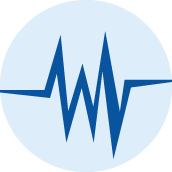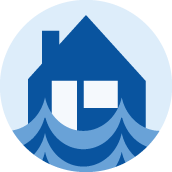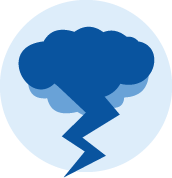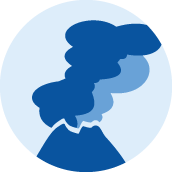Learn about earthquakesHe ako mō te Rūwhenua
New Zealand experiences thousands of earthquakes every year. Most are either very deep or centred well offshore, and cause little damage or injury. But a large earthquake can happen any time and can be followed by more shaking that continues for a long time.
On this page
What is an earthquake?
New Zealand lies on the boundary of the Pacific and Australian tectonic plates.
Tectonic plates are always on the move. Tension builds up as they scrape over, under or past each other. In some places, movement between the plates is happening all the time. This causes frequent small or moderate earthquakes. Other areas are likely to get stronger quakes separated by longer periods of time. This is because the tension builds up and releases in a bigger movement.
Most (though not all) earthquakes occur at faults. These are breaks that go deep within the Earth, caused by the movement of these plates.
The point under the ground where the earthquake actually begins is the hypocentre or focus. The place above it on the surface is the epicentre.
Earthquakes cause vibration waves to travel through the ground. The first sign of a quake is often the rumbling sound caused by the ‘P’ (primary or push) waves. These travel at about 20,000 kilometres an hour. That is twenty times faster than a jet plane.
The ‘S’ (secondary or shear) waves follow along at about 10,000 kilometres an hour. They cause the main rolling and shaking effects of an earthquake.
Strong earthquakes change the land, lifting it up or dropping it down. They cause landslides and rockfalls on hills. Sometimes they make solid land behave like a wobbling liquid (liquefaction). All these effects can damage buildings, roads, pipes, electricity and telephone networks.
Earthquakes create very strong shaking, which can damage and sometimes collapse buildings. Very big earthquakes in the sea floor sometimes create tsunami waves.
Measuring earthquakes
There are two ways of measuring earthquakes.
Richter scale
The Richter scale measures the energy released by an earthquake. We call this the earthquake's magnitude. The Magnitude (M) scale ranges from one to ten (the largest so far was the 9.5 Chilean earthquake in 1960). It is a logarithmic scale, which means that a magnitude seven earthquake is 32 times as powerful as a magnitude six earthquake. The 1855 Wellington earthquake had an estimated magnitude of 8.2. An M7.8 earthquake hit Napier in 1931 and an M7.8 quake hit Kaikōura in 2016.
Modified Mercalli scale
The Modified Mercalli (MM) scale is a measure of intensity. It is based on the effects of the earthquake on people and buildings. This scale ranges from MM1 (smallest) to MM12 (largest). The 1855 Wellington and 1931 Napier earthquakes were both MM10 at their epicentres. The shaking intensity lessens as you get further away from the epicentre. An earthquake can only have one magnitude value (how much energy). But it can have a range of intensities from very strong shaking if you are close to very mild shaking if you are further away.
What do we do before an earthquake?
- Practise your earthquake drill: Drop, Cover and Hold.
- Talk with your family and make an emergency plan.
- Identify safe places close to you at home or school.

Visit the Natural Hazards Commission Toka Tū Ake website for more information on making your home safer.
What do we do during an earthquake?
- Drop, Cover and Hold.
- Stay where you are until the
shaking stops. - If inside, stay inside; if outside
stay outside. - Do not attempt to run outside.
Drop, Cover and Hold
DROP down on your hands and knees. This protects you from falling but lets you move if you need to.
COVER your head and neck (or your entire body if possible) under a sturdy table or desk (if it is within a few steps of you). If there is no shelter nearby, cover your head and neck with your arms and hands.
HOLD on to your shelter (or your position to protect your head and neck) until the shaking stops. If the shaking shifts your shelter around, move with it.
Download Drop, Cover and Hold posters
What do we do after an earthquake?
- Listen to and follow all instructions from adults or the radio.
- Stay Calm. If you can, help others who may need it.
- Watch out for possible hazards.
- Remember there may be some aftershocks.
- Remember your emergency plan and follow it if it is safe to do so.
Find out more about what to do before, during and after an earthquake.
Home learning
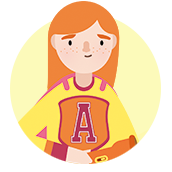 Draw a plan of your house showing places to shelter in an earthquake. Show where to turn off water, electricity and gas. Share your plan with a friend and ask if they have thought of doing their own.
Draw a plan of your house showing places to shelter in an earthquake. Show where to turn off water, electricity and gas. Share your plan with a friend and ask if they have thought of doing their own.
Make a plan with your family to get through an emergency. Think about the things you need every day and work out what you would do if you didn't have them.
Make your plan — print it out, stick it on the fridge and make sure everyone knows the plan.
Find out about past earthquakes that have happened in your region.
Learning resources






Watch these YouTube videos from GeoNet experts answering questions about natural hazards.
Learn about emergencies
Natural hazards can be frightening. They can strike at any time and often without warning. Explore the types of emergencies below and learn better ways to prepare.

